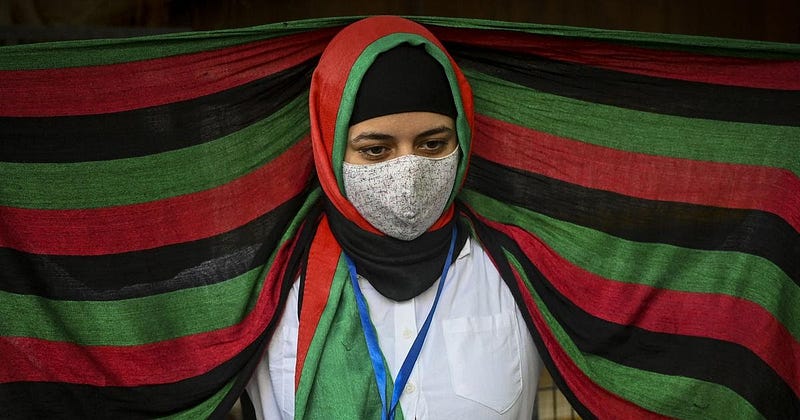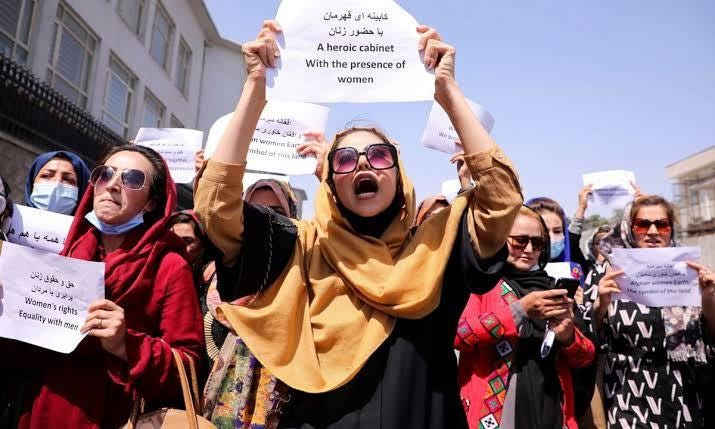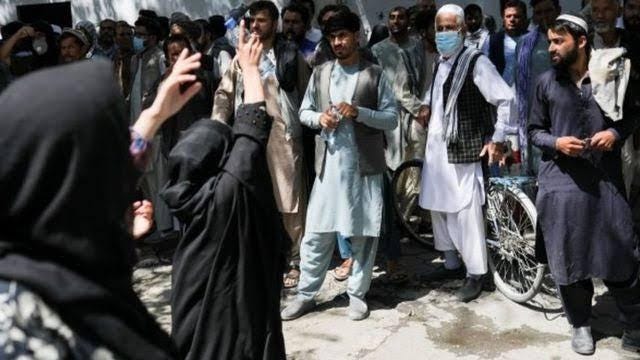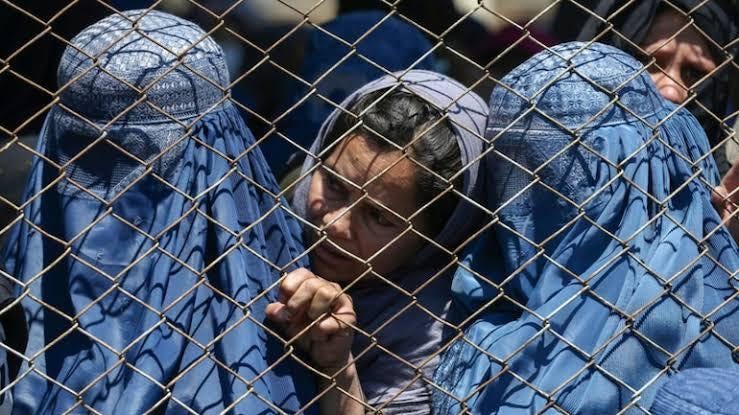Women’s Rights in Afghanistan: A Brief Overview
Have a look below to find out how the Taliban rule has a greatly negative impact on the lives of the women of Afghanistan. From the…
Have a look below to find out how the Taliban rule has a greatly negative impact on the lives of the women of Afghanistan. From the deprivation of basic human rights such as education to horrific acts of violence, the world must know what is happening in Afghanistan.
Disclaimer: The following article is written based on the views of the writers and does not reflect the views of the organisation. In addition, as this article is only a brief overview of the issues being discussed, the writers highly encourage you to read further about women’s rights in Afghanistan from other sources as well.
It all started in the year 1994, when the Taliban emerged from the southwest region of Afghanistan with a professed intention of putting Islamic values first and of battling the corruption that was heavily involved in the civil war ongoing at the time. With this message, they gained influence and took control of most of the regions and territories in Afghanistan. During their rule, the Taliban imposed a decree that all women were to be banned from employment and educational sectors. Yes, women were not allowed to work or go to school, robbing them of any opportunities to be independent. Women would also be severely punished if they were caught leaving their home without covering their faces with their burqa, or without a relative by their side. The women of Afghanistan were forced to comply with these strict laws until they were freed in 2001, when the Taliban were successfully overthrown by US-led armies and militants following the September 11 attacks which had entirely shaken the United States of America.
Alas, now in the year 2021, the Taliban are once again reigning over Afghanistan and threatening the wellbeing and freedom of its women following the government takeover that was conducted in August of this year. The President of Afghanistan, Ashraf Ghani, fled the country and left the people of Afghanistan to fend for themselves, condemning the women to return to a life deprived of opportunity by the hands of oppressive law. Day by day, more and more reports reveal further evidence that the Taliban are implementing rules, old and new, that lead to a massive rollback of women’s rights, giving those looking from the outside a peak at the harrowing experiences the women in Afghanistan must face at this very moment. In this article, we will dive into some of the struggles of the women in Afghanistan and discuss the ways you can help these women regain their lives.
False Promises, Contradictory Ruling, and Limitations Faced by Women in Afghanistan
While ruled by the former government, female students did not have to abide by a dress code and universities were co-educational, with men and women studying side by side. Here and now, the innocent young girls and brave women of Afghanistan are highly anxious about their future in education because of Taliban rule. The leaders of the Taliban have insisted that women need not worry, because they will allow women and girls to attend school and go to work, according to constrictions based on their interpretation of Islam, of course.
On the contrary, the changes they are making will bring detrimental impacts to Afghanistan’s education sector, preventing women from getting an acceptable standard of education even if they were allowed to go to school. The Taliban have indicated that men will no longer be permitted to teach girls or women, exacerbating an already severe teacher shortage. This, combined with constraints in paying teachers’ salaries and the cutoff of international aid, could have “immediate and serious” outcomes for education in Afghanistan, a UNESCO report warned. Additionally, it is reported that the Higher Education Minister, Abdul Baqi Haqqani, indicated that women would be allowed to study, but not alongside men. The policy marks a significant change from the accepted practice before the Taliban takeover and will drastically affect Afghanistan’s quality of education. Unfortunately, Mr Haqqani remains unapologetic about the change as he was quoted saying, “We have no problems in ending the mixed-education system. The people are Muslims and they will accept it.”
When it comes to the sports sector, things aren’t looking great either. Women have been banned from playing any kind of sport as it is considered “neither appropriate nor necessary” by the Taliban. We can only imagine the incredible hardship currently faced by Afghanistan’s female national sports teams. For instance, Afghanistan’s women’s soccer team is uncertain about their future after evacuating Afghanistan and flying off to Australia following the Taliban takeover in August, according to their captain, Shabnam Mobarez. Other than that, according to an official from the Taliban, the national women’s cricket team will officially be banned from playing the sport in the country under any circumstances.
If limiting women’s choices in education and completely removing them from sports wasn’t enough, the Taliban have reportedly shut down the Women’s Affairs Ministry and replaced it with a ministry for the “propagation of virtue and the prevention of vice.” Even the EU has said the Islamist group had reneged on promises to make their government “inclusive and representative”.
Several female athletes, entrepreneurs and politicians have fled Afghanistan already, fearing reprisals from the Taliban and their ultra-orthodox interpretation of Islamic law. The group has said that anyone who wants to leave Afghanistan and has valid travel documents is free to leave, but exit is complicated because Kabul’s main airport remains closed for civilian flights so far.
All of this, in addition to the act of segmenting and segregating rights according to genders, makes it clearer than ever that the Taliban have broken the promises they had made promptly after the takeover that they’d provide the necessary rights to women and have their best interests in mind when ruling this time around. The Taliban may not be ruling exactly the same way they did before, but they continue to hold onto extreme principles that restrict women to the point of no freedom.
Violence Against Women for Demanding Basic Human Rights
If we take a peek into the retrospective before the Taliban’s evacuation in 2001, the Afghan government had established girls schools, funded new universities, and later instituted a new constitution that introduced a democratic framework and granted Afghan women the right to vote. In urban areas women attended college, took jobs outside of home, ran businesses, and some even ventured into politics. Kabul became cosmopolitan. The women of Afghanistan accomplished many different things throughout those 20 years. In 2020, Shamsia Alizada, the daughter of a coal miner from Kabul, received the highest score out of 170,000 students in the annual national university entrance exam. The now former First Lady of Afghanistan, Rula Ghani, was named by Time magazine as one of the most influential people in the world and had constantly fought for women’s rights while she was still in office.
The women of Afghanistan were thriving and free.
After the takeover, they were forced to confine themselves in their homes and hide any signs of academic or career-based achievement for the sake of their safety, fearing for their lives. The women who couldn’t bear it any more, stepped down onto the streets of the capital on the 7th of September for a mass protest in order to fight for their rights and the demand for equality that the Taliban want to deprive them of. Demonstrators said they would not accept a government with no women ministers. Amidst all these protests, the Taliban chose to act out with the most animalistic approaches to counter them, beating them with electrocuted batons; three people were even killed during a demonstration in the western city of Herat. Today, the women in Afghanistan continue to question their sense of security and safety under the rule of the Taliban, continuing to fearlessly fight for what they deserve.
“Silence is Violence” — How to Help the Women of Afghanistan
Living Hell? This could quite possibly be the most rightful term to describe the current situation faced by the women of Afghanistan. We, as individuals, shouldn’t stay on the sidelines and watch as Afghanistan crumbles, as silence is not an option. Here are the ways you might be able to help:
1. You don’t have to ‘solve’ the crisis in Afghanistan. Knowing and understanding the women of Afghanistan and the issue at hand would be an important first step.
Avoid contributing narratives that are limited and ignorant when discussing Afghan and Muslim women online. Some of these harmful narratives may include, but are not limited to, conflating Islam with extremism, or suggesting the entire conflict comes down to burqas. Issues like displacement, separation of families, hunger, poverty, militarization and the traumas associated with invasion must be considered instead of opinions that are reductive and make sweeping generalizations about Afghanistan. Sharing opinions without knowledge is harmful to Afghan women because incorrect and inaccurate information being disseminated is not going to help them.
We encourage readers to do further reading on how people manipulate the narrative and spread misinformation about Afghanistan, starting with this article by InStyle: If You Want to Help the Women of Afghanistan, Here’s What You Need to Know First
2. Raise awareness.
Whether it’s by posting on social media, discussing the issue with your family or friends, or writing about it online. The word should be spread by any means possible to ignite the light of awareness in each and everybody in order for the whole world to unite together to drive Talibans out of Afghan Soil. Acknowledge the women of Afghanistan and encourage others to do the same.
3. Donate to relevant organisations.
Funds are urgently needed to protect Afghan people and ensure their safety. Here are some organisations working directly with girls and women in Afghanistan:
Women for Afghan Women (WAW) is a grassroots civil society organisation dedicated to protecting and promoting the rights of disenfranchised Afghan women and girls in Afghanistan and New York. You can answer their urgent appeal by donating here.
Madre is a global women’s rights organisation providing long-term support to women-led groups that are impacted by war and disaster in inaccessible areas. They are calling for funds to facilitate an urgent underground escape and support network in Afghanistan. Donate here.
International Rescue Committee (IRC) helps people whose lives have been upended by war, conflict and natural disasters around the world. They have been responding in Afghanistan since 1988. IRC are appealing for funding to help them continue to deliver aid to support children and families in Afghanistan. You can help them continue their work by donating here.
The United Nations Children’s Fund (UNICEF) works to promote and protect the rights of children and women in Afghanistan and have a presence in every region. So far, the Taliban have allowed UNICEF to remain and there is hope that they will be allowed to set up schools which girls can also attend. Donate here.
The Women’s Peace & Humanitarian Fund (WPHF) is an innovative partnership empowering local women to be a force for crisis response and lasting peace. They gather support from across the globe to fund the efforts of women working on the frontlines of the world’s most intractable conflicts. WPHF are supporting local women’s organisations in Afghanistan to sustain their work on the front lines of conflict and crisis. Donate here.
Afghanaid is a humanitarian and development organisation, working with millions of deprived and excluded families in some of the poorest and most remote communities in Afghanistan. They build basic services, improve livelihoods, strengthen the rights of women and children, help communities protect against natural disasters and respond to humanitarian emergencies. Donate here.
No amount is too small to help these young girls and women in Afghanistan. If you are able to, please donate today.
By the ideas and thoughts presented above, we’d like to conclude by reiterating the fact that the Afghan Crisis is real, it’s happening, and it’s becoming worse and worse as the days pass. We would like to preach for countries like India, Pakistan and other neighbouring countries as well as first world countries to take the necessary steps as soon as possible to curb the reign of the Taliban. International human welfare communities as well as the UN should pass legislations and rules required to rescue the Afghans out of the darkest days they’re currently facing. People across the world need to spread awareness because our willingness, even as ordinary people, to help put an end to this inhumane autonomy plays a crucial part in making it clear to the Taliban that they are not welcome.
Save the Women of Afghanistan.
[Written By: Sakib Rahman and Miza Alisya]







